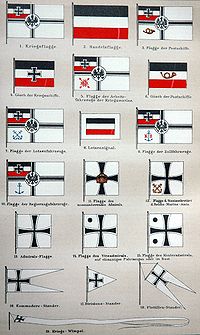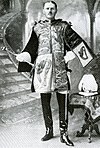Welcome to the Heraldry and Vexillology Portal!


Heraldry encompasses all of the duties of a herald, including the science and art of designing, displaying, describing and recording coats of arms and badges, as well as the formal ceremonies and laws that regulate the use and inheritance of arms. The origins of heraldry lie in the medieval need to distinguish participants in battles or jousts, whose faces were hidden by steel helmets.
Vexillology (from the Latin vexillum, a flag or banner) is the scholarly study of flags, including the creation and development of a body of knowledge about flags of all types, their forms and functions, and of scientific theories and principles based on that knowledge. Flags were originally used to assist military coordination on the battlefield, and have evolved into a general tool for signalling and identification, particularly identification of countries.
Selected coat of arms

There are 26 modern cantons of Switzerland, each of which has an official flag and coat of arms.The history of development of these designs spans the 13th to 20th centuries. With the exception of Lucerne, Schwyz and Ticino, the cantonal coats of arms are simply arrangements of the cantonal flags in a shield shape. This fashion originates in the 15th century. (more...)
Selected article

Burgher arms are coats of arms of commoners (i.e. non-nobles) in heraldry of the European continent. Although the term "burgher" arms refers to bourgeoisie, it is often extended also to arms of (Protestant) clergy and even to arms of peasants. In continental Europe, the use of armorial bearings has never been restricted to a particular social class (unlike in Britain). Every individual, every family and every community has been free to adopt and use arms and as they please, provided they have not wrongfully assumed the arms of another. The exception was arms in Portugal, where king Afonso V restricted burgher arms to the use of colours only.
Use of coats of arms by burghers and artisans began during 13th century and in the 14th century some peasants took to using arms. The arms of commoners bore a far wider variety of charges than the arms of nobility like everyday objects, in particular, tools. In burgher arms are met sometimes also house marks which are not met in arms of nobility. Most widespread burgher heraldry was and still is in Switzerland and in Netherlands. In Netherlands only a small percentage of the existing arms belong to the nobility. (more...)
Selected flag

The Red Ensign of Singapore is a civil ensign used by privately-owned, non-military ships that are registered in Singapore. The overall design of the ensign is a modification of the national flag, with the ratio of the width to the length extended to 1:2. The ensign was created by law in 1966. The use of this ensign is regulated by the Maritime and Port Authority of Singapore (MPA). According to the MPA, the Red Ensign is the only ensign to be used on Singaporean civilian ships, and the national flag is not an acceptable substitute. The ensign must be hoisted on all Singaporean ships on entering or leaving port. (more...)
Selected picture

Flags used by the German Kaiserliche Marine (Imperial Navy), 1892.
Did you know...
- ...that the British First World War general Sir William Peyton (pictured) served as Delhi Herald Extraordinary at the Delhi Durbar of 1911?
- ...that for most of Sir Richard Lane's time as Lord Keeper of the Great Seal, there was no Great Seal?
- ...that the coat of arms of Kola depicts a whale because whaling was the occupation of many residents of the town?
- ...that the flags hoisted by the Finnish icebreaker Tarmo on 3 March 1918 included a large white tablecloth?
- ...that while the 126.8 metre Raghadan Flagpole is both earthquake and weather-resistant, the 60 metre by 30 metre Flag of Jordan that it flies must be lowered during high winds due to excessive noise?
Related portals
|
|
|
Heraldry Web resources
Authorities
- Belgium - The Council of Nobility, Flemish Heraldic Council and Council of Heraldry and Vexillology of the French Community
- Canada - Canadian Heraldic Authority and see also Public Register of Arms, Flags and Badges
- England, Wales, and Northern Ireland - The College of Arms
- Ireland - The Office of the Chief Herald of Ireland
- Netherlands - High Council of Nobility
- Portugal - Instituto da Nobreza Portuguesa
- Scotland - The Court of the Lord Lyon
- South Africa - South African Bureau of Heraldry
- Sweden - National Board of Heraldry, The National Archive
- United States Army - The United States Army Institute of Heraldry
Societies
- Greek Heraldry Society
- The Academy of Heraldic Science Czech republic
- The American College of Heraldry
- The American Heraldry Society
- The Augustan Society
- The Australian Heraldry Society Inc.
- Bulgarian Heraldry and Vexillology Society
- The Center for Research of Orthodox Monarchism
- Cambridge University Heraldic and Genealogical Society
- Chiltern Heraldry Group
- The College of Dracology
- Croatian Heraldic and Vexillologic Association
- The Finnish Heraldic Society
- Fryske Rie foar Heraldyk
- Hellenic Armigers Society
- Guild of Heraldic Artists
- Genealogical Society of Ireland
- Heraldry Research Institute (Japan)
- The Heraldry Society
- The Heraldry Society of Africa
- The Heraldry Society of New Zealand Inc.
- The Heraldry Society of Scotland
- The Heraldry Society of Southern Africa
- The Institute of Heraldic and Genealogical Studies
- The International Association of Amateur Heralds
- Italian Center of Vexillological Studies
- Lancashire Heraldry Group
- Macedonian Heraldry Society
- New England Historic Genealogical Society Committee on Heraldry
- Norwegian Heraldry Society
- Oxford University Heraldry Society
- Polish Heraldry Society
- Polish Nobility Confederation
- Real Academia Matritense de Heráldica y Genealogía - Royal Academy of Heraldry and Genealogy of Madrid
- Romanian Institute for Genealogy and Heraldry
- The Royal Heraldry Society of Canada
- The Russian College of HeraldryThe Russian College of Heraldry
- Serbian Heraldic Society
- Societas Heraldica Scandinavica
- Societas Heraldica Slovenica
- Swedish Heraldic Society
- Ukrainian Heraldry Society
- Royal Association Genealogical and Heraldic Office of Belgium
Vexillology
Software
- Coat of Arms Visual Designer web-based program
- Puncher Heraldry Program
- Blazonry Server - pyBlazon
- DrawShield - creates SVG shield or arms image from blazon
- CoaMaker - web-based tool
- Blazon95 and BLAZONS! 2000, older Windows applications
Texts
- Heraldry, historical and popular : with seven hundred illustrations (1863)
- A Complete Guide to Heraldry (1909)
Other
Wikimedia
The following Wikimedia Foundation sister projects provide more on this subject:
-
Commons
Free media repository -
Wikibooks
Free textbooks and manuals -
Wikidata
Free knowledge base -
Wikinews
Free-content news -
Wikiquote
Collection of quotations -
Wikisource
Free-content library -
Wikispecies
Directory of species -
Wikiversity
Free learning tools -
Wikivoyage
Free travel guide -
Wiktionary
Dictionary and thesaurus











